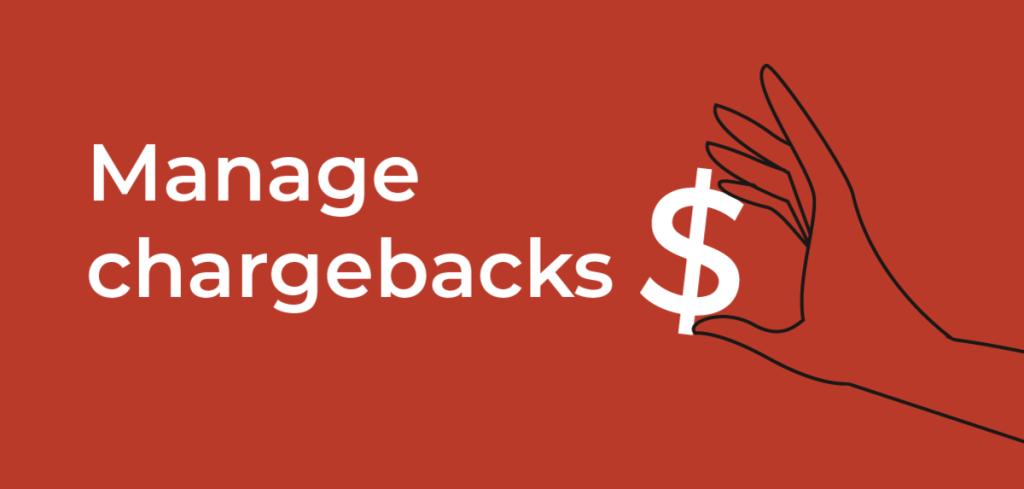Chargebacks pose significant risks to businesses, particularly in high-risk sectors such as online gaming, travel, and subscription services. Chargebacks cost merchants billions annually, and industries classified as high-risk face greater exposure due to higher fraud and dispute rates. To maintain financial stability, merchants need robust strategies to prevent and manage chargebacks. This guide outlines the steps necessary for reducing chargebacks, backed by key data and actionable insights.
What Are Chargebacks?
Chargebacks occur when customers dispute a transaction with their bank, which reverses the transaction. This process is intended to protect consumers but often creates challenges for businesses. Chargebacks typically fall into four categories:
- Fraud: The customer claims unauthorized use of their payment method.
- Service Issues: The product was not delivered, or the service was not as promised.
- Processing Errors: Mistakes like double billing or incorrect amounts.
- Authorization Issues: Transactions processed without proper authorization.
High-risk merchants face a disproportionate number of chargebacks due to the nature of their businesses, making it critical to understand how to handle disputes efficiently. In many cases, chargebacks result from customer misunderstandings, fraud, or dissatisfaction.
Key Statistics on Chargebacks
According to Mastercard, chargebacks cost businesses $40 billion annually in direct losses and up to $80 billion when including indirect losses, such as reputational damage and processing fees. For high-risk sectors, chargebacks account for 1.5-3% of all transactions. This is well above the 1% threshold that payment processors often use to flag high-risk merchants. Businesses exceeding this threshold face increased fees and possible account termination.
High-Risk Merchants: Why They Face More Chargebacks
High-risk businesses typically experience more chargebacks due to the higher likelihood of fraud, customer disputes, and regulatory scrutiny. For example, subscription services face chargebacks from recurring billing disputes, while travel companies often deal with disputes due to cancellations or service delays. Online gambling and adult entertainment also experience high fraud rates.
Table 1: Industries with High Chargeback Rates
| Industry | Chargeback Rate (%) | Common Chargeback Reasons |
|---|---|---|
| Online Gambling | 3-5% | Fraud, Unauthorized Transactions |
| Travel Agencies | 0.7-1.1% | Service Issues, Refund Disputes |
| Subscription Services | 1-3% | Recurring Billing, Non-Delivery |
| High-Ticket E-Commerce | 1.5-2% | Product Not Received, Fraud |
To combat these higher chargeback rates, high-risk merchants need specialized strategies and tools. Without proper management, these businesses face increased fees, stricter compliance requirements, and account termination.

Financial and Operational Impact of Chargebacks
Chargebacks have direct financial costs and operational challenges. On average, merchants lose $3.50 for every dollar disputed due to associated fees, resource allocation for dispute management, and lost products or services.
Table 2: Financial Impact of Chargebacks
| Impact Category | Amount | Source |
|---|---|---|
| Chargeback Fees | $20-$100 per case | Stripe.com, Braintree.com |
| Processing Fee Increases | +2-3% | Mastercard, VISA |
| Revenue Lost | Full transaction | Mastercard, Checkout.com |
Operational Strain: Handling chargebacks is labor-intensive. Businesses must gather evidence and submit disputes within tight timelines, typically 14-40 days depending on the payment processor. Persistent high chargeback rates can lead to account termination, forcing businesses to find new payment processors at significantly higher rates.
Reducing Chargebacks for High-Risk Transactions
Effective chargeback management begins with proactive strategies to prevent disputes. High-risk merchants can reduce their chargeback ratios by implementing clear communication policies, fraud prevention measures, and robust payment systems.
1. Fraud Prevention
Merchants can lower fraud-related chargebacks by using multi-layered security protocols. 3D Secure authentication, for example, requires customers to verify their identity during checkout, reducing fraudulent transactions by up to 35%. Other tools like AI-based fraud detection systems analyze transaction patterns and flag potential fraud in real-time.
2. Transparent Policies
Clear return, refund, and shipping policies reduce customer confusion, which accounts for 20% of chargebacks. Merchants must display these policies prominently on their websites and ensure customers are fully informed before purchasing.
3. Accurate Billing Descriptors
Incorrect or vague billing descriptors lead to chargebacks when customers don’t recognize a transaction on their statement. Businesses should ensure that their billing descriptors accurately reflect their company name or recognizable brand, reducing disputes related to unrecognized charges.
4. Customer Service
Providing fast and responsive customer service is critical to resolving disputes before they escalate. Mastercard studies show that 15% of chargebacks could be avoided with better customer communication. Offer accessible customer support via phone, email, or chat, and aim to resolve issues promptly.
Managing Chargebacks Effectively
Even with preventative measures, chargebacks will still occur. High-risk merchants must be prepared to handle disputes efficiently to minimize their impact.
Steps for Effective Chargeback Management:
- Review Reason Code: Each chargeback comes with a reason code explaining why the dispute was initiated. Understanding this is key to building a defense.
- Collect Evidence: Merchants should gather all relevant documentation, including receipts, delivery confirmations, and customer communications.
- Submit a Defense: Submit the dispute with compelling evidence within the allowed timeframe, typically 14-40 days depending on the payment processor. If the merchant successfully disputes the chargeback, the funds are returned.
Specialized chargeback representment services can assist merchants by managing disputes and navigating the complexities of different payment networks.

The Role of High-Risk Payment Processors
Not all payment processors are equipped to handle high-risk merchants. Businesses in high-risk sectors require specialized processors that offer fraud detection tools, rolling reserves, and real-time chargeback alerts. Payment processors such as Checkout.com and Stripe offer solutions tailored to high-risk industries.
Table 3: Key Features of High-Risk Payment Processors
| Feature | Description | Source |
|---|---|---|
| Higher Transaction Fees | +2-4% over standard rates | Mastercard, Checkout.com |
| Rolling Reserves | 5-10% of daily revenue held in reserve | Mastercard documentation |
| Advanced Fraud Detection | AI-driven, reduces fraud by up to 40% | Checkout.com, Stripe |
High-risk merchants may also need to establish rolling reserves with their payment processor, ensuring a portion of their revenue is set aside to cover potential chargebacks.
Best Practices for High-Risk Merchants
Adopting best practices helps high-risk merchants minimize chargeback risks and improve their operational efficiency.
1. Monitor Chargeback Ratios
Regularly monitor chargeback ratios to detect trends and address issues early. A chargeback ratio above 1% can trigger penalties from payment processors. Merchants should aim to keep this ratio as low as possible through proactive measures.
2. Regularly Review Policies
Refund, cancellation, and shipping policies should be reviewed and updated regularly to ensure compliance with industry standards. Misalignment between policy and practice can result in chargebacks, especially in subscription-based businesses.
3. Leverage Chargeback Alerts
Many payment processors offer real-time chargeback alerts, allowing businesses to respond quickly to disputes. This can significantly increase the chances of successfully disputing a chargeback.
4. Use Merchanto.org for Chargeback Prevention
High-risk merchants looking to reduce chargebacks can benefit from services like Merchanto.org, an official partner of VISA and Mastercard. Merchanto.org provides chargeback prevention tools and services tailored to high-risk businesses, helping merchants stay compliant with payment processing guidelines.
Conclusion
Handling chargebacks effectively is essential for high-risk merchants to maintain financial stability. By implementing fraud prevention measures, maintaining clear communication, and using specialized payment processors, businesses can reduce chargebacks and improve profitability. Merchants must also stay informed about the latest payment industry trends and regularly monitor their chargeback ratios to avoid penalties.



